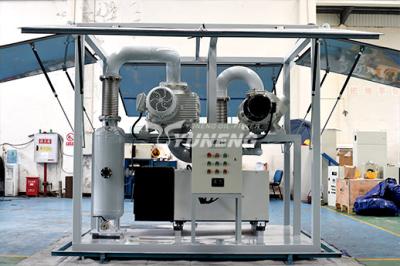Categories
Tags
-
#Portable Oil Purification
#6000LPH Transformer Oil Purifiers
#Mobile Dry Air Compressor
#Transformer Vacuum Pumping
#Vacuum Pumping Systems
#Single Stage Transformer Oil Purification Plants
#Transformer Oil Regeneration Machine
#Transformer Oil Dehydration Machines
#Lube Oil Purifiers
#Transformer Oil Degassing
#Two-Stage Vacuum Pumps with Roots Pump
#Transformer Oil Filtration
#Hydraulic Oil Purifier
Archives
How Leak Detection Systems Improve Vacuum Pumping Efficiency in
-
Transformer manufacturing is a highly precise process that requires stringent quality control to ensure reliability and longevity. One of the most critical stages in transformer production is vacuum pumping, which removes moisture and gases from the transformer tank and insulation materials. Any leaks in the system can significantly hinder this process, leading to inefficiencies and potential defects. This is where leak detection systems play a vital role in enhancing vacuum pumping efficiency.
The Importance of Vacuum Pumping in Transformer Manufacturing
Before filling a transformer with insulating oil, manufacturers must ensure that the internal environment is free from moisture and air. Residual gases and humidity can degrade insulation, cause partial discharges, and reduce the transformer's lifespan. Vacuum pumping is used to achieve the necessary dryness and gas removal. However, if there are leaks in the system, the vacuum level cannot be maintained, leading to:
Longer processing times – Leaks force the vacuum pumps to work harder, increasing cycle times.
Higher energy consumption – Continuous pumping to compensate for leaks raises operational costs.
Poor insulation quality – Incomplete moisture removal can lead to dielectric failures.
How Leak Detection Systems Optimize Vacuum Pumping
Integrating advanced leak detection systems into the vacuum pumping process offers several efficiency improvements:
1. Early Leak Identification
Leak detection systems use methods such as helium mass spectrometry, pressure decay testing, or ultrasonic detection to pinpoint leaks before or during vacuum pumping. Early detection prevents prolonged pumping cycles and reduces unnecessary energy expenditure.
2. Maintaining Optimal Vacuum Levels
A reliable leak detection system ensures that the vacuum chamber and transformer tank remain airtight. By sealing leaks promptly, manufacturers can achieve and maintain the required vacuum levels faster, improving overall process efficiency.
3. Reducing Downtime and Waste
Undetected leaks can lead to failed vacuum cycles, requiring rework and additional testing. Leak detection minimizes these risks, reducing production delays and material waste.
4. Enhancing Transformer Reliability
By ensuring a leak-free environment, manufacturers can guarantee that the transformer’s insulation is thoroughly dried and degassed. This improves dielectric strength and operational reliability, reducing the risk of failures in the field.
Conclusion
Leak detection systems are a crucial component in transformer manufacturing, directly impacting the efficiency of vacuum pumping processes. By identifying and sealing leaks early, manufacturers can reduce cycle times, lower energy consumption, and enhance product quality. Investing in advanced leak detection technology not only optimizes production but also ensures that transformers meet the highest performance and safety standards.
For transformer manufacturers looking to improve efficiency and reduce costs, integrating high-precision leak detection systems is a smart and necessary step toward achieving superior product quality.
